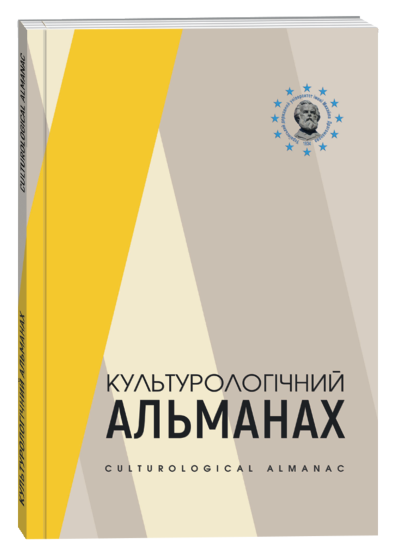BUDDHIST MEDITATION TERMINOLOGY IN THE CONTEXT OF THE PALI CANON
DOI:
https://doi.org/10.31392/cult.alm.2025.3.2Keywords:
buddhist meditation, pali canon, terminology, phenomenology, hermeneuticsAbstract
The article explores the phenomenologically oriented terminology of Buddhist meditation in the context of the Pali Canon and its modern interpretations. Buddhist meditation is a complex set of consciousness-training practices aimed at gradually transforming the practitioner’s worldview in order to eliminate such experiential qualities as suffering and dissatisfaction from their subjective experience. Language remains to be the primary way of transmitting meditative skills and instructions, which presents a number of challenges from the perspective of hermeneutics and phenomenology, particularly due to the inherent gap between language and reality – since words can only approximately point to an experience rather than replicate it. The basis of language for describing meditation is a predefined glossary of terms. Currently, there is both the original terminology from the Pali canon and its numerous translations and modern interpretations. However, both have drawbacks – the terms from the Tripitaka were created in a different cultural and historical context, which complicates their application, while modern terminologies are often created without taking into account the specifics of the meditative process and the difficulties that arise when verbally describing instructions due to the aforementioned limitations of language, which likely impacts the effectiveness of transmitting meditative skills and the quality of practice. Therefore, the article aims to outline a phenomenologically oriented terminology of Buddhist meditation for a more accurate description of mind training practices. The study analyzes key linguistic challenges in describing meditative experience and formulates core criteria for such terminology: pragmatic applicability, doctrinal consistency, accuracy, contextual flexibility, and logical coherence. It also presents an overview of the Pāli Canon, including frequency analysis of key terms, examination of the most commonly used instructional suttas, as well as the modern academic literature, which has formed its own terminology of Buddhist meditation by combining ancient sacred texts and recent scientific achievements. Based on the analyzed sources, a set of terms is proposed along with their functional definitions, corresponding Pāli equivalents, and conceptual interrelations. The conclusion summarizes the findings and offers directions for further research and potential practical applications.
References
Колесник, І. М. (2022). Особливості поширення буддизму в Україні: напрями, школи, вчителі. Вісник Львівського університету. Серія філософсько-політологічні студії, 43, 54–62. https://doi.org/10.30970/PPS.2022.43.7
Колесник, І. М. (2023). Різноманіття визначень медитації: підходи, виклики і перспективи. Multiversum. Philosophical Almanac, (2(178)), Vol. 1. https://doi.org/10.35423/2078-8142.2023.2.1.7
Bhikkhu Bodhi (ed.). (2005). In the Buddha’s Words: An Anthology of Discourses from the Pāli Canon. Wisdom Publications. 488 p.
Bhikkhu Bodhi. (trans.). (2009). Anapanasati Sutta (Mindfulness of Breathing). SuttaCentral. Retrieved from: https://suttacentral.net/mn118/en/bodhi
Bhikkhu Sujato. (trans.). (2021). Udāna 1.10: Bāhiya Sutta (The Discourse about Bāhiya). SuttaCentral. Retrieved from: https://suttacentral.net/ud1.10/en/sujato
Blomberg, J., & Żywiczyński, P. (2022). Language and Its Limits: Meaning, Reference and the Ineffable in Buddhist Philosophy. Topoi, 41(3), 483–496. https://doi.org/10.1007/s11245-021-09756-z
Collier, C. (2020). Frequency-Ordered Pali Vocabulary. Buddhist University. URL: https://buddhistuniversity.net/content/reference/pali-vocab_ccollier
de Saussure, F. (2008). Course in general linguistics. (R. Harris, Trans.). Duckworth, 1983 p.
Divino, F. (2025). Language and Consciousness in Early Buddhist Thought: On the Early Reflections on the Theme of Language and the Perception of Reality in the Pāli Canon. Philosophies, 10(2), 31. https://doi.org/10.3390/philosophies10020031
Mahāsatipaṭṭhāna Sutta – Bhikkhu Sujato. – SuttaCentral. URL: https://suttacentral.net/dn22/en/sujato
Pratap, M. (2023). An Overview of Mahāsatipaṭṭhānasutta. Kolkata: Maha Bodhi Society of India.
Sukwitthayakul, C., & Thongrin, S. (2022). Understanding the Pali Canon through keyword analysis: A comparison between different reference corpora. Rangsit Journal of Social Sciences and Humanities, 9(2), 209–222. URL: https://jcsh.rsu.ac.th/files/issues/V9N2/209_20221209104828.pdf
Understanding the Pali Canon through Keyword Analysis. (2022). Rangsit: Journal of Cultural and Social Humanities.URL: https://jcsh.rsu.ac.th/files/issues/V9N2/209_20221209104828.pdf
Wallace, B. Alan. (2006). The Attention Revolution: Unlocking the Power of the Focused Mind. Wisdom Publications. 224 pp.
Yates, J., Immergut, M., Graves, J. (2015). The Mind Illuminated: A Complete Meditation Guide Integrating Buddhist Wisdom and Brain Science for Greater Mindfulness. New York : Touchstone. 512 p.
Young, S. (2023). Five Ways to Know Yourself: An Introduction to Mindfulness. Shinzen Publications. 183 p.









